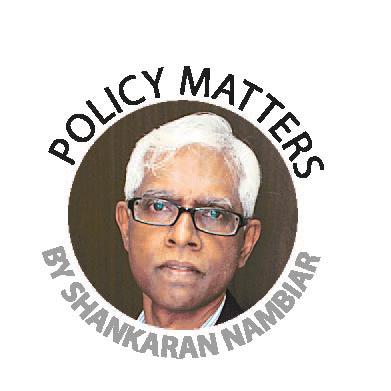TRADE talks are set to go on in Beijing ahead of the March 1 deadline. United States trade representative Robert Lighthizer and Treasury secretary Steven Mnuchin can be expected to push a hard deal since the issues go well beyond trade.
Beijing is a powerful economy that will only grow in influence, but until it assumes supremacy it still has to deal with the US, the largest economy in the world.
There are some reasons why China may capitulate, or at least attempt to meet the US half-way.
First, China’s economy is growing less aggressively than it has been accustomed to. In 2018 it grew at 6.6%, its lowest in 28 years. China registered a growth rate of 14.2% in 2007, since then its growth rate has been on a downward slide.
A rate of 6.6% might be high by Asean standards, but not by China’s. (India is overtaking China with its figure of 7.3% in recent times.) But, then again, surely China does not expect to be holding decades of growth at 10% or more.
The point is that China’s domestic economy has to be fuelled, and much of it has come, for a long time, from trade.
Second, China’s stock market has had to take a punch from the US-China trade war. The Shanghai composite was down by about 25% in November 2018 on account of the spat.
Third, China’s current account recorded its first deficit in the first half of 2018. It was a huge deficit amounting to US$28.3 billion. Its services trade for the same period saw a deficit of US$147.3 billion. Goods trade, however, posted a surplus of US$155.9 billion.
It is worth noting that from 2008, China’s current account surplus has been shrinking. In 2007, its current account surplus was 9.9% of GDP; in 2017 it was a mere 1.3%. Also significant has been a downward trend in China’s exports in recent years.
Though some crucial indicators are going against China’s favour, and would be exacerbated by the US-China trade war, there are other factors that require consideration.
The war is not simply a question of the US having a lower trade deficit with China. That could be achieved if China cut its export volume to the US.
The US is more concerned about the lax attitude that China takes towards intellectual property rights and the pressure on US companies to transfer technology to their Chinese counterparts.
The US demands the following:
» protection of intellectual property rights,
» outlawing of forced technology transfer, and
» industry subsidies that distort the market.
China denies these claims, and even if it accedes to them, it will not accept a US-monitored enforcement of measures that would put a stop to infringements.
These are important issues to US business. It is not that the China market does not matter to US manufacturing; it is only that they want a more secure environment in China. Although Trump talks of wanting US business to return to the US, he must know that it will not work out in practice. He would also want to see China buying more from the US to reduce the trade deficit that the US has against China.
While the trade war is not the last of disagreements between the US and China, this particular episode will, before too long, come to an acceptable closure. Meanwhile Southeast Asian markets will be affected by the raging uncertainty, Malaysia included.
China will want to press the pause button given its bad trade data. China also knows that if it wants to attract more high quality investments it will have to be mindful of the anxieties of foreign investors.
The US may also want a slowdown on trade frictions ahead of its elections and to take home the message that it won this round. Such a message will cheer Wall Street and spur Trump fans.
For Malaysia, there is not a great deal that it can do, should there be a repeat skirmish. The US does not figure as a substitute for trade with China. Besides, there are not many alternative markets that Malaysia can explore to decrease its reliance on trade with China. The EU is not a sizeable market and intra-Asean trade does not seem to have too much capacity to offer Malaysia.
Within the Asean framework, the removal of non-tariff barriers can be an item to work on. But there is surely a great deal that Malaysia can do to shore up domestic reform and enhance its attractiveness for investment.
Shankaran Nambiar is a senior research fellow at the Malaysian Institute of Economic Research. He is author of the recently published book, “Malaysia: An Economy at the Edge of Transformation”.















